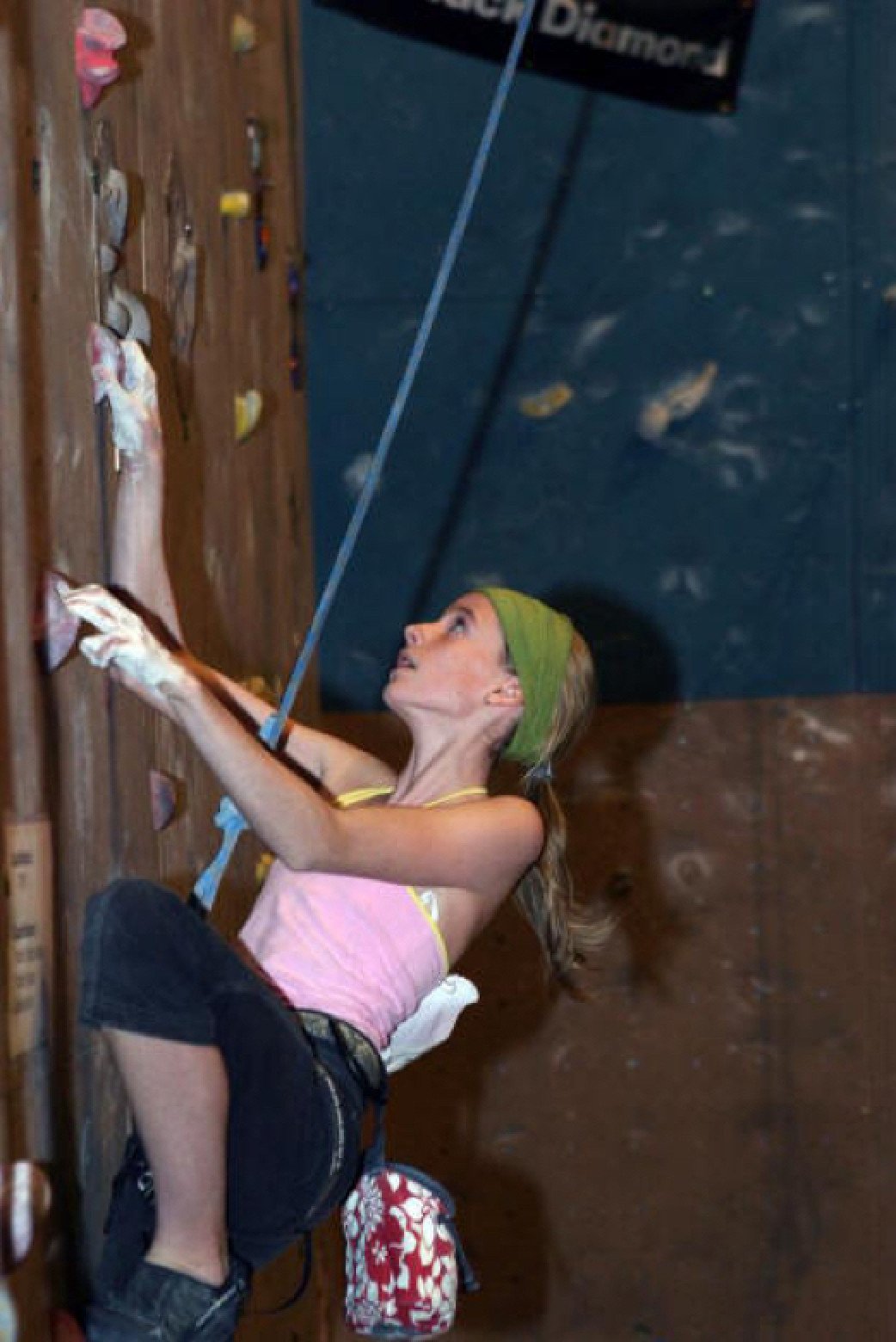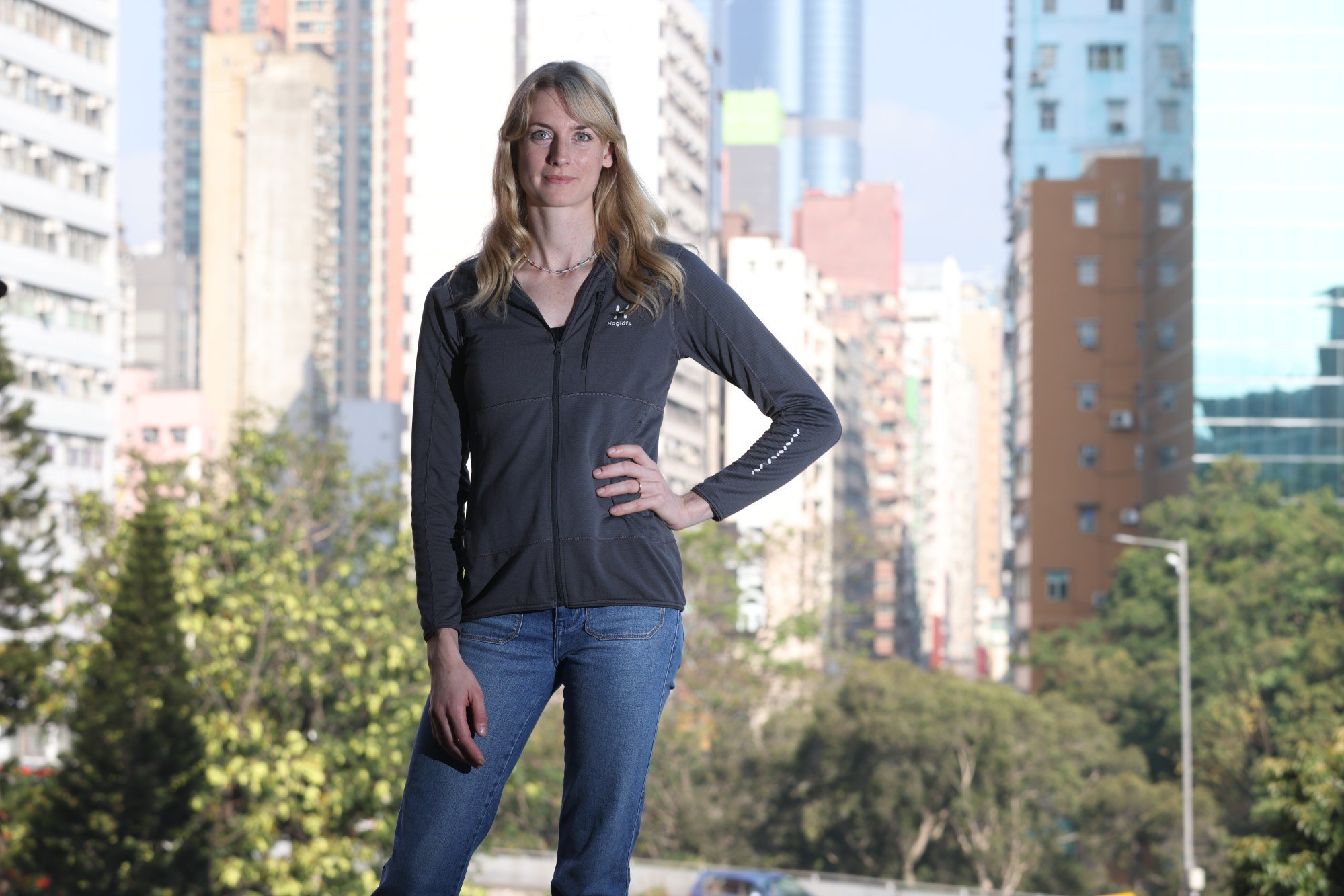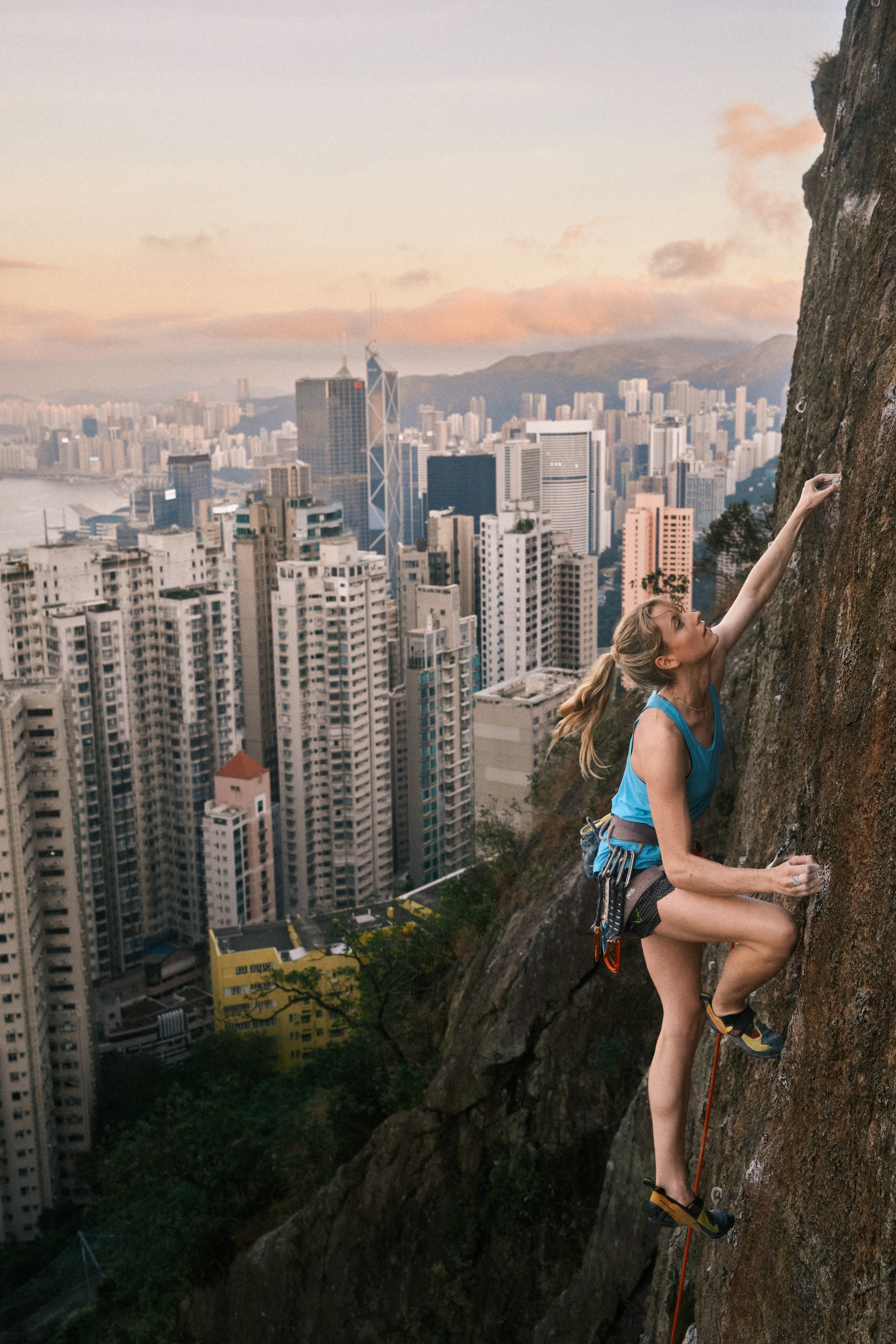
- Swedish climber Matilda Soderlund talks about honing her competitive spirit as an infant, finding her life’s passion and getting engaged atop Kowloon Peak
My dad is a doctor and my mum is a physiotherapist and they met at a hospital in Stockholm (the capital of Sweden). They moved back to my father’s hometown of Saltsjöbaden, a seaside town just outside Stockholm, when I was born. It is a well-off area and a comfortable and protected environment to grow up in.
I was born in 1992 and my sister came along three years later. My mum and a couple of other mums got together and decided not to put their young kids in day care and instead look after them.
From the age of three, I hung out with the other kids and we went into the forest. We used to compete for everything – who could run the fastest, who would get the biggest piece of cake.
When we were six, we went to school together and brought that competitive spirit with us. It seemed normal that everything was a competition, whether it was school grades or who had the nicest clothes.

Climb to the top
Our neighbour coached the youth athletics team. He’d seen me running down the street and when I was six suggested that I join the club. I loved to move and had a lot of energy, so doing something physical was a good way to channel that energy.
For orphan who fell into drugs and saw her son die, hope after the heartbreak
My understanding of sport was that you trained for something and then you had a competition. I loved the feeling of standing on a podium.
Something clicked when I started climbing. I didn’t need to think about it, my body was doing what felt natural. That classmate’s dad invited me to join them climbing the following week, and my father joined, too.
Hong Kong has amazing rock climbing. Everyone has been really friendly and we have met a lot of climbers hereMatilda Soderlund
After four weeks, my friend’s dad registered us for the Swedish Youth Championship. I only learned the rules when we got there, but I did well and made the finals.
Dirtbag culture
My dad and I began climbing together. Three months after I started, I entered the junior Swedish championships and took second place. I dropped all other sports to focus on climbing.

It became an all-consuming passion, but I struggled with my identity. Climbing at the time was a very niche sport. It was male-dominated and associated with a dirtbag culture. I didn’t fit in, so perhaps as a reaction to that very masculine environment, I began to wear more pink.
World class
As long as I did my school work, my parents let me climb as much as I wanted. Four or five times a week my dad and I went to the climbing gym after he finished work. He was more or less coaching me, though we were learning together.
I competed nationally, then in the Nordic countries and from the age of 14 at the European youth cups. I competed all through high school. Although I was one of the best climbers in the world for my age, my classmates didn’t know about my climbing success.
‘I thought I was god’s gift to China’: how Pearl Lam learned to be Chinese
In decline
After I graduated from high school, in 2012, I took a year out to focus on climbing before going to university. I climbed in the world championship finals and the world games finals and had a lot of success.
I decided to take another year to climb full time, but as I put more pressure on myself, my motivation began to decrease. I found myself in an unhealthy toxic mental state.
Light-bulb moment
I wanted to take a step back, so, in August 2013, I started at the Stockholm School of Economics. I finally popped the climbing bubble and got to meet new people. It was the best thing that could have happened, and I embraced university life.

At this time, my dad got very sick and was diagnosed with cancer. It really affected me, and I started questioning my priorities.
I had an epiphany in a taxi on the way back from work at 3am. I realised climbing was a gift I’d been given, and I could do something with that and try to make a difference and inspire people or do something completely normal in an office.
I decided I wanted to build my life and career around climbing.
I love the feeling of being on the wall, it’s unbeatable, nothing else gives me that. I’m so focused and in the present, thinking about the next move.Matilda Soderlund
Going outdoors
The next day I reached out to the coach I’d worked with before I went to university and he offered to start coaching me again. My initial vision for what I wanted was to start a climbing gym, which would allow me to combine what I’d learned at university with my passion for climbing.
I started looking into that in 2018. I shifted from competitions to only climbing outside. I was able to climb full time and was in better shape than I’d ever been. It felt like a new chapter, I was starting again on my own terms.
‘No one asks to become addicted’: when son died she declared war on drugs
Having taken a step back, I was clearer about my relationship with climbing. I love the feeling of being on the wall, it’s unbeatable, nothing else gives me that.
I’m so focused and in the present, thinking about the next move, regardless of whether it’s an indoor wall or several hundred metres up a wall in Spain. Climbing outside I get to see such amazing places and meet people from different cultures. Often I’m climbing with friends.
Where there’s a William there’s a way

We became a couple in 2021. It took a few years to get the funding for the climbing gym and find a location. Moumo – which comes from “mountain movements” – opened at the end of 2022.
William is an investor in the gym, and we travel the world together. He is my photographer and manager, so we work together as well. The goal is to expand our climbing-gym business.
Try and try again
I try to push my climbing in terms of what is possible. Since the spring of 2021, I’d been working on a difficult climb in northern Sweden but kept falling on the same move towards the end. I trained hard and went back last September for three weeks to try to finish it.
Once ‘a shy kid’, now he’s a comedian on Netflix: meet Amit Tandon
It is all in the detail. When you have tried it so many times you know every single foot and hand placement by heart.
When I went to bed, I would think about all the moves. Once the weather cleared up and it was dry enough to climb, I had a great day and felt super good, but then I miscalculated and took a massive fall and hit my head and shoulder against the wall. I went back the next day and finished it.
That experience was filmed for a documentary, Niemesis 9a, which is being screened in Hong Kong.
Climbing Hong Kong

We have also climbed at Beacon Hill and Hero Crag, and visited four climbing gyms. We will definitely come back to Hong Kong.
My dad is doing much better. He often comes to our gym and climbs there. I’m grateful for the opportunity to do the things I love in life.

